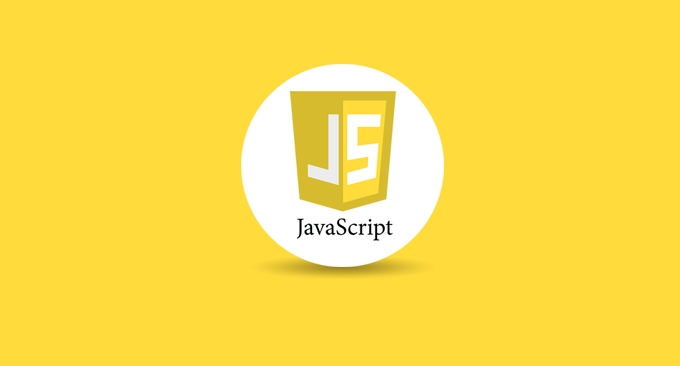Implementing Javascript Event Delegation for Performance
Jul 07, 2025 am 02:06 AMEvent delegates use event bubble mechanism to place event listeners on the parent element, not on each child element. The core idea is to process events of multiple child elements through a listener, thereby reducing memory usage and improving page performance. For example, in a
- list with multiple items, just add a listener to
- once. Reasons for using event delegation include: 1. Reduce the number of listeners and save resources; 2. Support dynamic content without rebinding; 3. Simplify the code structure for easy maintenance. When implementing, you need to use event.target to determine the actual click object, and use the matches() method to check whether the target selector is matched. Suitable scenarios include: lists, tables, dynamic loading content, navigation components and mobile large click areas, etc. However, if the element needs to bind different events independently or needs to be processed in the capture stage, it is not suitable to use event delegation.

In web development, when dealing with events of a large number of DOM elements, binding the event listener directly for each element is not only bloated in code, but also significantly affects performance. JavaScript's Event Delegation is an effective way to solve this problem.

What is event delegation?
The core idea of ??event delegation is: to use the event bubble mechanism to place the event listener on the parent element, rather than on each child element. In this way, even if there are dozens or even hundreds of buttons or links in the page, only one listener is needed to handle all click events.

For example: you have a <ul></ul> list with multiple items, and if each <li> is bound to a click event, the memory usage and response time will become worse as the number of items increases. If you use event delegation, you only need to add a monitoring to <ul></ul> once.
Why use event delegate?
-
<li> Reduce the number of listeners : saves memory resources and improves page response speed.
<li> Dynamic content support is better : new child elements do not need to rebind events.
<li> Simplify code structure : easier to maintain and manage event logic.
For example, if you are making a to-do list, users can add new tasks at any time. If each task item is bound to the click-delete event separately, it must be bound once every time it is added. When using event delegates, it is enough to bind them once on the container.

How to correctly implement event delegation?
The key to achieving this is to judge whether the event target is the element you want to operate on. Usually, event.target and event.currentTarget are used to distinguish which node is actually clicked.
document.getElementById('parent').addEventListener('click', function(event) {
if (event.target.matches('.child')) {
// Handle click logic console.log('Clicked on child:', event.target);
}
});Here are a few key points:
-
<li> Use
matches() method to check whether the currently clicked element matches the selector.
<li> Be careful not to over-rely rely on parentNode or search layer by layer, as it is prone to errors.
<li> For complex nested structures, you can make judgments based on class names, attributes, etc.
Some common mistakes include:
-
<li> Forgot to check
event.target , causing the parent element itself to be fired by mistake.
<li> Use delegates during the non-bubbling phase (for example, some custom events may not bubble).
Which scenarios are suitable for using event delegation?
-
<li> Each row/column in a list and table needs to be interacted with.
<li> Dynamically load content, such as comment sections, chat windows, etc.
<li> Navigation bar, menu, label switching and other components.
<li> When the mobile phone click area is large, prevent too many monitors from affecting the smoothness.
Of course, not all cases apply. If your element needs to bind different event types independently, or handle events when it needs to be captured, it is not suitable to use delegates.
summary
Event delegates are a simple but very practical technique, which can significantly improve performance especially when dealing with large amounts of DOM nodes or dynamic content. Its principle is not complicated. The key is to reasonably judge the event source and ensure that other elements are not triggered by mistake.
Basically all that is it. If you master this technique, you will have another trick to optimize your JavaScript performance.
The above is the detailed content of Implementing Javascript Event Delegation for Performance. For more information, please follow other related articles on the PHP Chinese website!

Hot AI Tools

Undress AI Tool
Undress images for free

Undresser.AI Undress
AI-powered app for creating realistic nude photos

AI Clothes Remover
Online AI tool for removing clothes from photos.

Clothoff.io
AI clothes remover

Video Face Swap
Swap faces in any video effortlessly with our completely free AI face swap tool!

Hot Article

Hot Tools

Notepad++7.3.1
Easy-to-use and free code editor

SublimeText3 Chinese version
Chinese version, very easy to use

Zend Studio 13.0.1
Powerful PHP integrated development environment

Dreamweaver CS6
Visual web development tools

SublimeText3 Mac version
God-level code editing software (SublimeText3)
 How to make an HTTP request in Node.js?
Jul 13, 2025 am 02:18 AM
How to make an HTTP request in Node.js?
Jul 13, 2025 am 02:18 AM
There are three common ways to initiate HTTP requests in Node.js: use built-in modules, axios, and node-fetch. 1. Use the built-in http/https module without dependencies, which is suitable for basic scenarios, but requires manual processing of data stitching and error monitoring, such as using https.get() to obtain data or send POST requests through .write(); 2.axios is a third-party library based on Promise. It has concise syntax and powerful functions, supports async/await, automatic JSON conversion, interceptor, etc. It is recommended to simplify asynchronous request operations; 3.node-fetch provides a style similar to browser fetch, based on Promise and simple syntax
 JavaScript Data Types: Primitive vs Reference
Jul 13, 2025 am 02:43 AM
JavaScript Data Types: Primitive vs Reference
Jul 13, 2025 am 02:43 AM
JavaScript data types are divided into primitive types and reference types. Primitive types include string, number, boolean, null, undefined, and symbol. The values are immutable and copies are copied when assigning values, so they do not affect each other; reference types such as objects, arrays and functions store memory addresses, and variables pointing to the same object will affect each other. Typeof and instanceof can be used to determine types, but pay attention to the historical issues of typeofnull. Understanding these two types of differences can help write more stable and reliable code.
 React vs Angular vs Vue: which js framework is best?
Jul 05, 2025 am 02:24 AM
React vs Angular vs Vue: which js framework is best?
Jul 05, 2025 am 02:24 AM
Which JavaScript framework is the best choice? The answer is to choose the most suitable one according to your needs. 1.React is flexible and free, suitable for medium and large projects that require high customization and team architecture capabilities; 2. Angular provides complete solutions, suitable for enterprise-level applications and long-term maintenance; 3. Vue is easy to use, suitable for small and medium-sized projects or rapid development. In addition, whether there is an existing technology stack, team size, project life cycle and whether SSR is needed are also important factors in choosing a framework. In short, there is no absolutely the best framework, the best choice is the one that suits your needs.
 JavaScript time object, someone builds an eactexe, faster website on Google Chrome, etc.
Jul 08, 2025 pm 02:27 PM
JavaScript time object, someone builds an eactexe, faster website on Google Chrome, etc.
Jul 08, 2025 pm 02:27 PM
Hello, JavaScript developers! Welcome to this week's JavaScript news! This week we will focus on: Oracle's trademark dispute with Deno, new JavaScript time objects are supported by browsers, Google Chrome updates, and some powerful developer tools. Let's get started! Oracle's trademark dispute with Deno Oracle's attempt to register a "JavaScript" trademark has caused controversy. Ryan Dahl, the creator of Node.js and Deno, has filed a petition to cancel the trademark, and he believes that JavaScript is an open standard and should not be used by Oracle
 What is the cache API and how is it used with Service Workers?
Jul 08, 2025 am 02:43 AM
What is the cache API and how is it used with Service Workers?
Jul 08, 2025 am 02:43 AM
CacheAPI is a tool provided by the browser to cache network requests, which is often used in conjunction with ServiceWorker to improve website performance and offline experience. 1. It allows developers to manually store resources such as scripts, style sheets, pictures, etc.; 2. It can match cache responses according to requests; 3. It supports deleting specific caches or clearing the entire cache; 4. It can implement cache priority or network priority strategies through ServiceWorker listening to fetch events; 5. It is often used for offline support, speed up repeated access speed, preloading key resources and background update content; 6. When using it, you need to pay attention to cache version control, storage restrictions and the difference from HTTP caching mechanism.
 Handling Promises: Chaining, Error Handling, and Promise Combinators in JavaScript
Jul 08, 2025 am 02:40 AM
Handling Promises: Chaining, Error Handling, and Promise Combinators in JavaScript
Jul 08, 2025 am 02:40 AM
Promise is the core mechanism for handling asynchronous operations in JavaScript. Understanding chain calls, error handling and combiners is the key to mastering their applications. 1. The chain call returns a new Promise through .then() to realize asynchronous process concatenation. Each .then() receives the previous result and can return a value or a Promise; 2. Error handling should use .catch() to catch exceptions to avoid silent failures, and can return the default value in catch to continue the process; 3. Combinators such as Promise.all() (successfully successful only after all success), Promise.race() (the first completion is returned) and Promise.allSettled() (waiting for all completions)
 Leveraging Array.prototype Methods for Data Manipulation in JavaScript
Jul 06, 2025 am 02:36 AM
Leveraging Array.prototype Methods for Data Manipulation in JavaScript
Jul 06, 2025 am 02:36 AM
JavaScript array built-in methods such as .map(), .filter() and .reduce() can simplify data processing; 1) .map() is used to convert elements one to one to generate new arrays; 2) .filter() is used to filter elements by condition; 3) .reduce() is used to aggregate data as a single value; misuse should be avoided when used, resulting in side effects or performance problems.
 JS roundup: a deep dive into the JavaScript event loop
Jul 08, 2025 am 02:24 AM
JS roundup: a deep dive into the JavaScript event loop
Jul 08, 2025 am 02:24 AM
JavaScript's event loop manages asynchronous operations by coordinating call stacks, WebAPIs, and task queues. 1. The call stack executes synchronous code, and when encountering asynchronous tasks, it is handed over to WebAPI for processing; 2. After the WebAPI completes the task in the background, it puts the callback into the corresponding queue (macro task or micro task); 3. The event loop checks whether the call stack is empty. If it is empty, the callback is taken out from the queue and pushed into the call stack for execution; 4. Micro tasks (such as Promise.then) take precedence over macro tasks (such as setTimeout); 5. Understanding the event loop helps to avoid blocking the main thread and optimize the code execution order.






